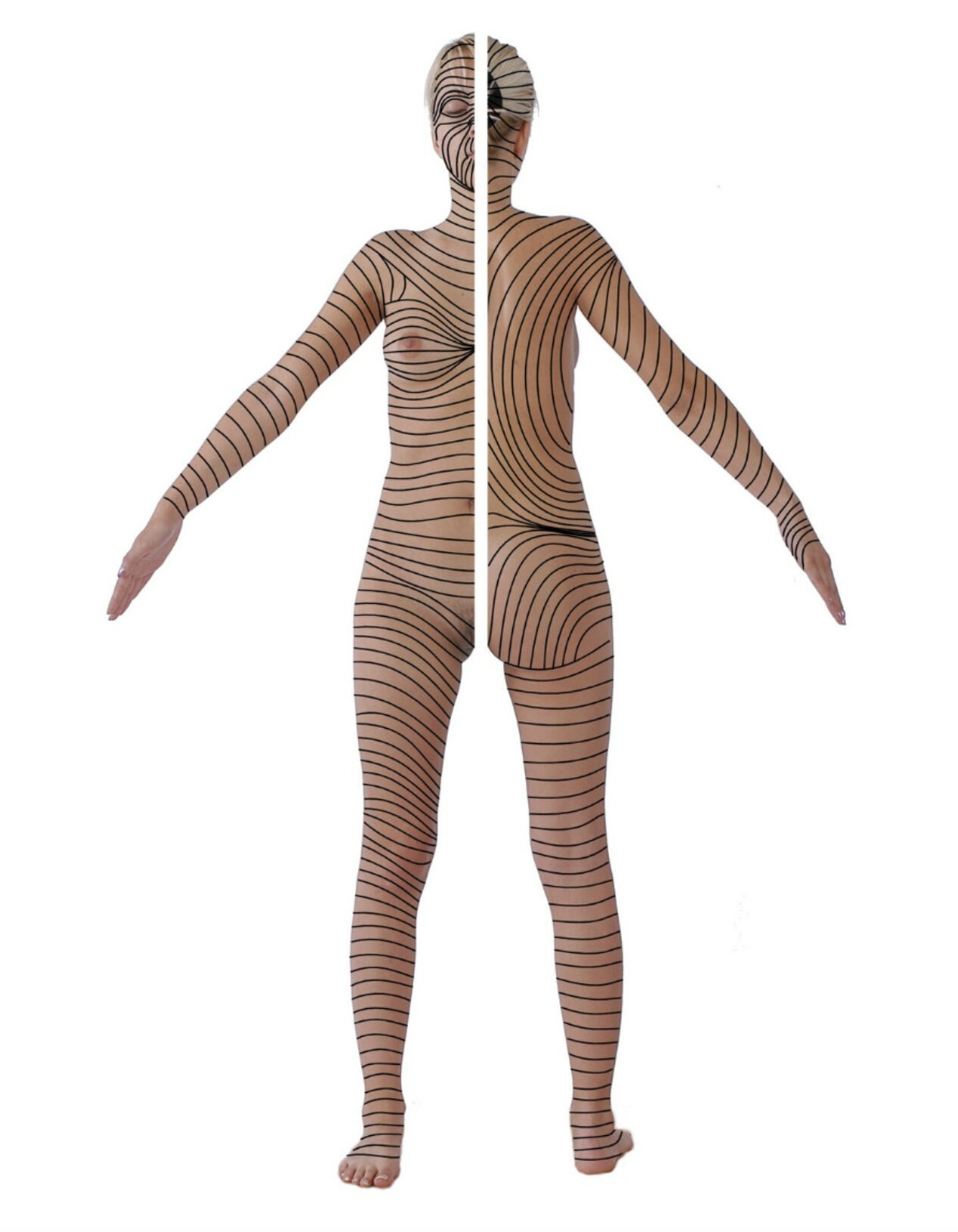Overview
Skin tension lines reflect internal tension within the skin.
Skin tension lines essentially refer to the direction of maximal skin tension at different body sites. They reflect internal tension within the skin due to connective tissue (e.g. collagen) within the dermis.
There are different types of skin tension lines. The two most widely recognised are ‘Langer’s lines’ (also known as cleavage lines) and relaxed skin tension lines. Aligning surgical incisions or excisions with these lines produces less tension, optimal scar formation, and ultimately a better cosmetic result.
These lines can be drawn on a diagram of the human body.

Body map of skin tension lines
Image courtesy of Blanco, JMA. et al. Wikimedia commons
Langer’s lines
Langer’s lines run parallel to the collagen bundles within the dermis.
These lines were originally determined in the 19th century by piercing cadaver skin and observing the orientation of skin. When multiple punch excisions are performed on skin to create ellipses, if their major axes (i.e. the line connecting the two vertices of the ellipse) are aligned they are considered Langer’s lines.
Relaxed skin tension lines
Relaxed skin tension lines refer to furrows that are created when the skin is pinched and relaxed.
Skin is maximally stretched perpendicular to relaxed skin tension lines. Therefore, tension (i.e. stretch) can be reduced by creating an incision parallel to relaxed skin tension lines.
These lines run in the same direction as Langer’s lines in many areas of the body. However, they may differ significantly in complex areas (e.g. temple).

